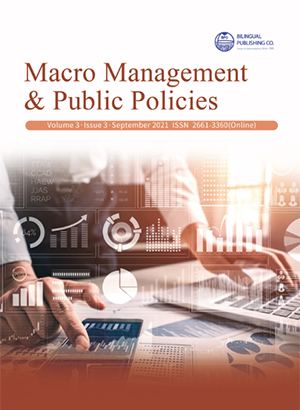-
1917
-
1450
-
1081
-
941
-
824
Velocity of Money in Ethiopia
DOI:
https://doi.org/10.30564/mmpp.v3i3.3547Abstract
Velocity of money is an important instrument used to measure the monetary target and quality of monetary policy. Referencing the trends in the money velocity, mainly in the short term, will have a paramount effect in determining the trends in real money growth. This study investigates the main causes of money velocity in Ethiopia using time series data for the period 1974/75 to 2015/16. A regression with Bayesian estimation and nonparametric Locally Weighted Scatterplot Smoothing (LOWESS) methods were used to analyze the data. Variables such as credit, real interest rate, real exchange rate and real per capita income were included as potential determinants of money velocity. The findings of using non-parametric LOWESS methods show an upward trends in the velocity of money since 2002 and downward trends before 2002, indicating the existence’s of prudent monetary policy in Ethiopia after 2002. The result also shows a positive effect of real exchange rate and credit, whereas income per capita and real interest rates have a negative effect on velocity of money in Ethiopia. Hence, this paper recommends that, the policy to encourage sustainable economic growth and increase in interest rate would be beneficial to reduce velocity of money.Keywords:
LOWESS, Credible interval, Prior, PosteriorReferences
[1] Chiaromonte.F. "ocally weighted least square regression smoothing methods lecture notes." Michigan University, 2005.
[2] Fry, Maxwell J. "Money and Capital or Financial Deepening in Economic Development." Journal of Money, Credit, and Banking, 1988.
[3] Gujarati. "Introduction to Econometrics." Oxford University press, 2003.
[4] Honda, Zhan and Thomas. "The Federal Democratic Republic of Ethiopia: Selected Issues, International Monetary Fund." International Monetary Fund, 2008.
[5] Howells, Iris Biefang-Frisancho Mariscal and Peter. "Income and Transactions Velocities in the UK." Centre for Global Finance Working Paper Series, 2010.
[6] Khan, Rana Ejaz and Ali. "Velocity of money in pakistan; Time series analysis." 2013.
[7] Mishkin, Frederic S. The economics of money, banking, and financial markets. Addison-Wesley: The Addison-Wesley series in economics), 2004.
[8] Orphanides, Athanasios and Richard D. Porter. "P* Revisited: Money-Based Inflation Forecasts with a Changing Equilibrium Velocity." Journal of Economics and Business, 2000: 52, 87-100.
[9] Rashid, Abid. "Determinants of income velocity of money in Pakistan." International Conference on Applied Economics, 2015.
[10] Rencher, Alvin C.,. "Linear models in statistics." Bruce Schaalje. 2nd ed., 1974.
[11] Selden, R.T. "Monetary Velocity in the United States, Studies in the Quantity Theory of Money." Chicago university, 1956.
[12] Stefanski, Antonio Mele and Radoslaw. "Velocity in the Long Run: Money and Structural Transformation." School of Economics and Finance Discussion, 2016.
[13] Van den Ingh, H. "Velocity as an Indicator for Economic Policy." Erasmus School of Economics, Erasmus University Rotterdam, 2009.




 Kedir Bekeru Genemo
Kedir Bekeru Genemo

